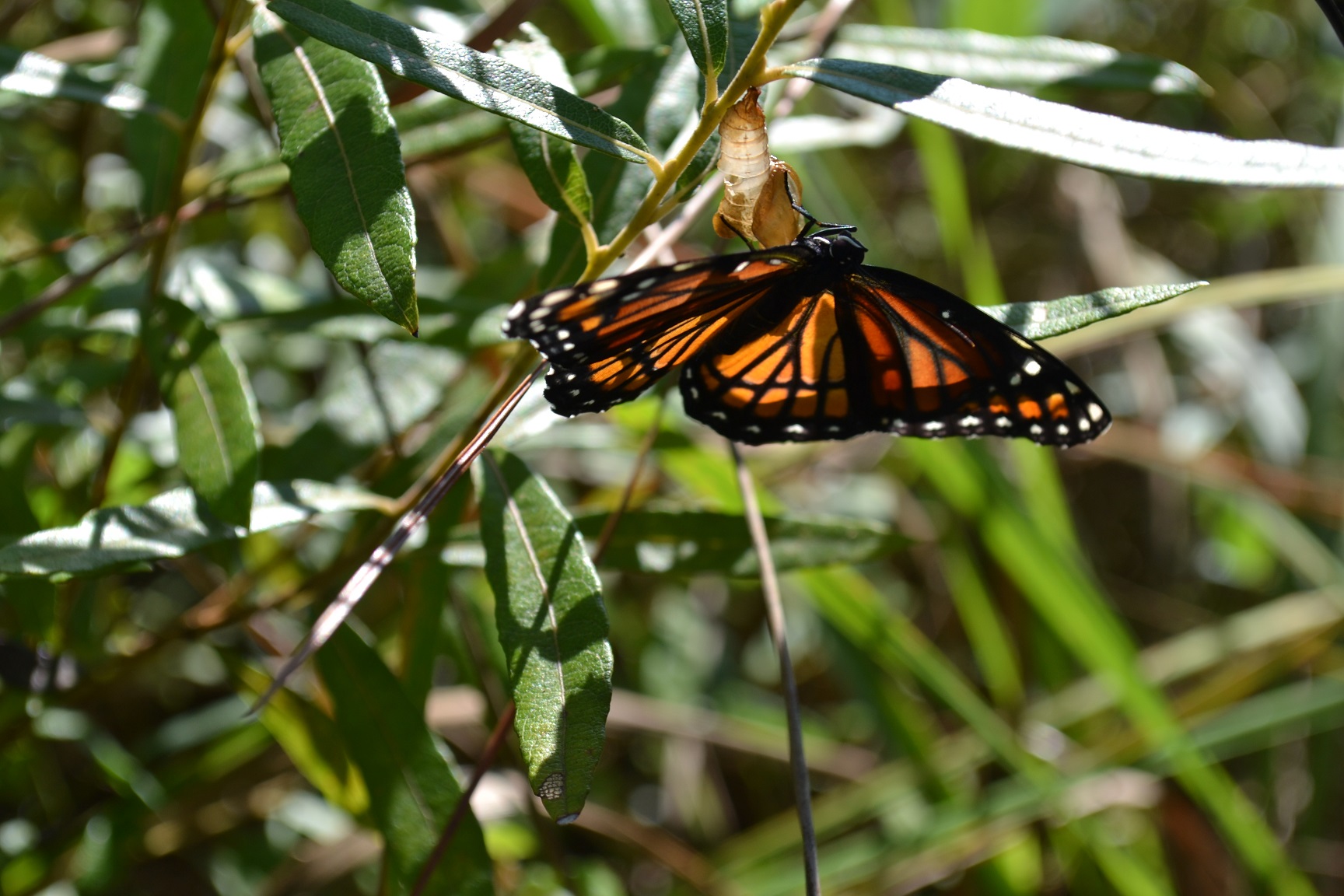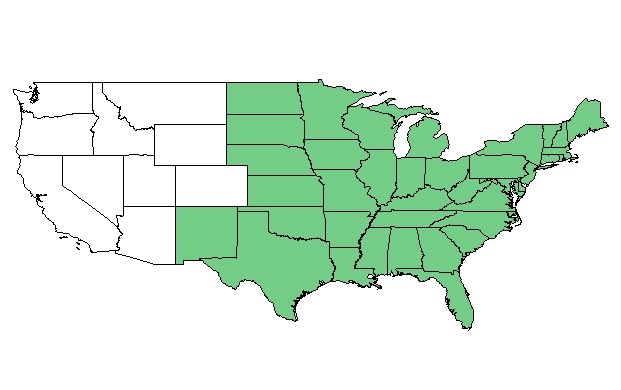Salix humilis
Common names: Prairie willow, Dwarf willow, Upland willow
| Salix humilis | |
|---|---|

| |
| Salix humilis with Viceroy butterfly just enclosed from chrysalis. Wade Tract, GA. Photo by Kevin Robertson | |
| Scientific classification | |
| Kingdom: | Plantae |
| Division: | Magnoliophyta - Flowering plants |
| Class: | Magnoliopsida - Dicotyledons |
| Order: | Salicales |
| Family: | Salicaceae |
| Genus: | Salix |
| Species: | S. humilis |
| Binomial name | |
| Salix humilis Marshall | |

| |
| Natural range of Salix humilis from the Ladybird Johnson Wildflower Database. | |
Contents
Taxonomic notes
Synonyms: none Varieties: Salix humilis var. humilis; S. humilis var. hyporhysa Fernald
Description
"Catkins firms, not pendulous. Staminate flower with 2-8 stamens subtended by 1 or 2 glands. Leaves usually more than 3X as long as wide; buds with 1 scale. Capsule basically ovoid."[1]
"Shrub; branchlets usually cinereous. Leaves glabrous above, glaucous and usually pubescent beneath, coarsely reticulate, oblanceolate, obovate, or elliptic, 1.5-11.5 cm long, 0.6-3 cm wide, acute or obtuse, entire or undulate-crenulate, revolute, base cuneate petioles usually pubescent, 1-9 mm long. Stamens 2, filaments glabrous. Fruiting catkins 1.5-3 cm long, 15-18 mm broad, subsessile; capsules grayish, pubescent, 7-9 mm long, pedicels 1-2 mm long."[1]
Distribution
Ecology
Habitat
S. humilis has been found in pine flatwoods, pond shorelines, and areas with loamy sand.[2] It is also found in disturbed areas including burned pine woods, under utility lines, and along hiking trails.[2] Associated species: Pinus palutris, P. elliottii, and Cyrilla parviflora.[2]
Pollination and use by animals
Salix humilis has been observed to host a variety of bees species. More specifically, the bees observed were members of the Andrenidae family such as Andrena arabis, A. bisalicis, A. carlini, A. cressonii, A. fenningeri, A. forbesii, A. frigida, A. hilaris, A. imitatrix, A. mandibularis, A. miserabilis, A. nasonii, A. nigrihirta, A. rugosa, A. sigmundi, A. tridens and A. vicina, members of the Apidae family such as Apis mellifera, Nomada bella, N. luteoloides and N. xanthura, Cavariella sp. (family Aphididae), members of the Halictidae family such as Augochlora pura, A. aurata, Halictus ligatus, Lasioglossum acuminatum, L. bruneri, L. coeruleum, L. coriaceum, L. cressonii, L. imitatum, L. leucocomum, L. paradmirandum, L. versatum, Sphecodes aroniae and S. minor, and members of the Megachilidae family Osmia atriventris and O. lignaria.[3]
Conservation, cultivation, and restoration
Cultural use
Photo Gallery
References and notes
- ↑ 1.0 1.1 Radford, Albert E., Harry E. Ahles, and C. Ritchie Bell. Manual of the Vascular Flora of the Carolinas. 1964, 1968. The University of North Carolina Press. 358. Print.
- ↑ 2.0 2.1 2.2 Florida State University Herbarium Database. URL: http://herbarium.bio.fsu.edu. Last accessed: June 2021. Collectors: Loran C. Anderson, R. F. Doren, Robert K. Godfrey, R. Komarek, R. Kral, and William Platt. States and counties: Alabama: Talladega. Florida: Leon and Taylor. Georgia: Grady and Thomas.
- ↑ Discoverlife.org [1]